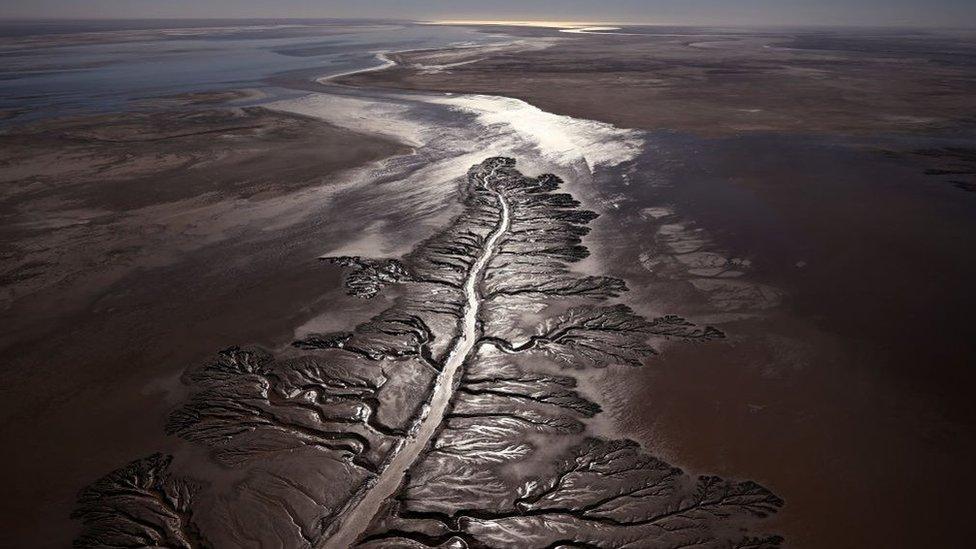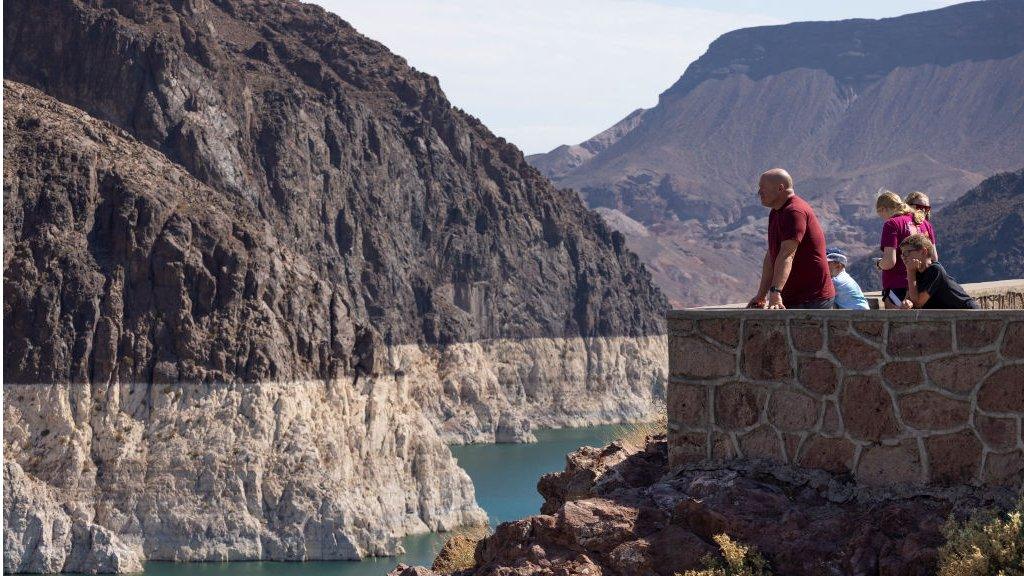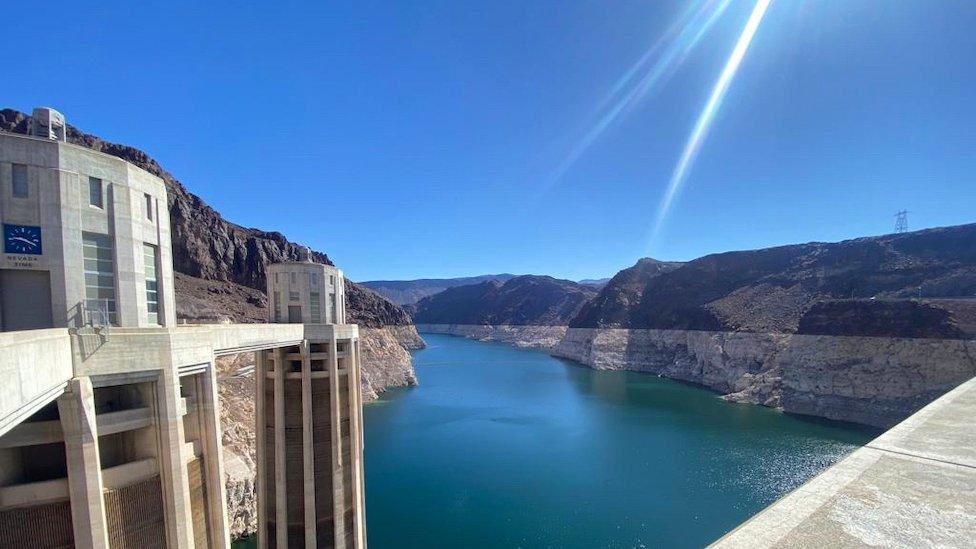Colorado River: US states fail to reach deal on cutting water use
- Published

The Colorado River provides water to more than 40 million people across seven states and Mexico
Seven US Western states that rely on the drought-stricken Colorado River have failed to reach an agreement on cutting water consumption.
California, the largest user, did not join a water cut proposal put forward by six others by a federally requested 31 January deadline.
A two-decade drought has shrunk the river basin's water supply to historically low levels.
The deadlock could prompt the US government to impose unilateral cuts.
The Colorado River provides drinking water to more than 40 million people in the seven Western states - Colorado, New Mexico, Utah, Wyoming, Nevada, Arizona and California.
But the drought in the region has reduced the river's flow significantly, and the states have consumed more water than is available, prompting the Interior Department to ask for restricting water use.
The government had asked for a plan to reduce water use from the Colorado River basin by two to four million acre-feet, or one-third of the river's yearly average flow.
Six of the states agreed on a plan that would bring it down by two million acre-feet of water. Under that plan, California - the state with the largest water consumption rate - would need to cut more than one million acre-feet.
California had previously offered to reduce their consumption by just 400,000 acre-feet.
The Chair of the Colorado River Board of California told the Associated Press that the state "remains focused on practical solutions that can be implemented now to protect volumes of water in storage without driving conflict and litigation", and that it plans to submit its own plan.
The six other states submitted a proposal to the US Bureau of Reclamation that outlined ways to reduce water consumption.
The plan includes cutting water use from Lake Powell and Lake Mead to prevent the two critical reservoirs from reaching "dead pool" - i.e. when water in a reservoir drops so low that it cannot flow downstream.
"We recognise that over the past twenty-plus years there is simply far less water flowing into the Colorado River system than the amount that leaves it, and that we have effectively run out of storage to deplete," the states said in their letter.
They added they will continue to work together with hopes of reaching consensus on "how best to share the burden" of protecting the water system.
Recent reports show that the Colorado River's water flows were down 20% in 2000 and by 2050 that number is estimated to more than double.
A report in the journal Nature last year found 2000-2021 to be the driest 22-year period for southwestern North America in at least 1,200 years.
Related topics
- Published17 August 2021

- Published8 April 2021

- Published3 June 2022
